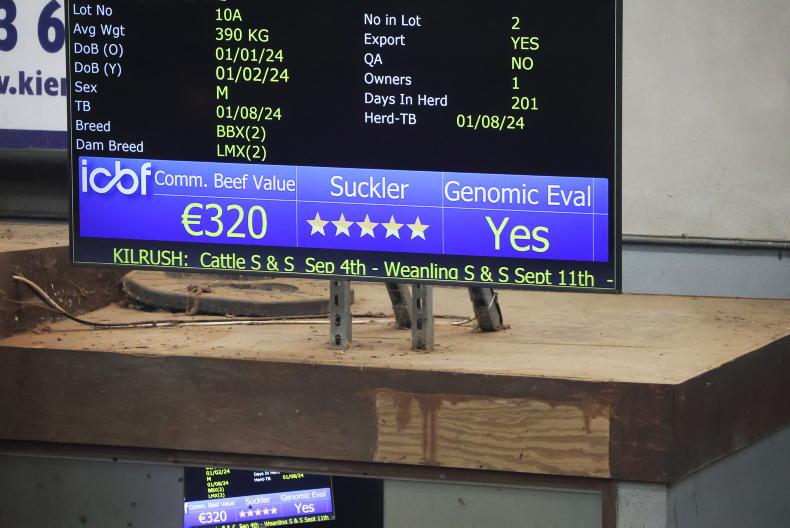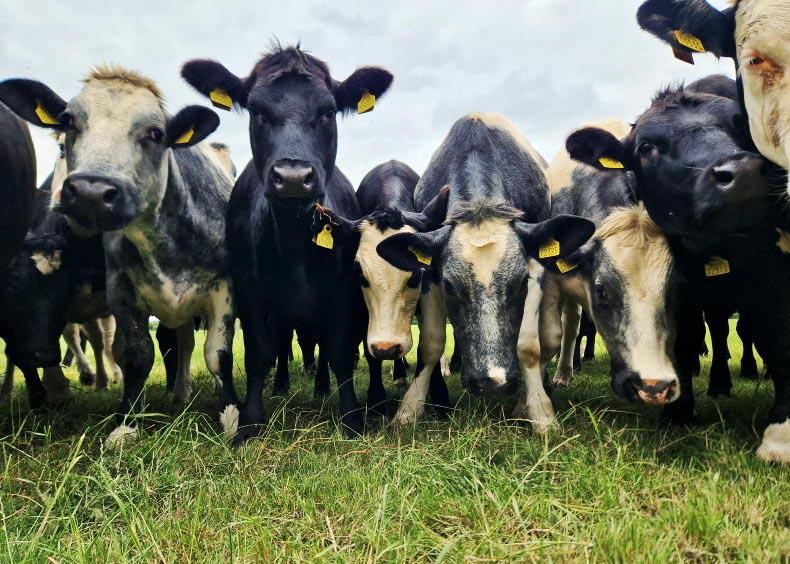The standoff between the breed societies and ICBF has always been described as a showdown between the scientists and the self-interested show coats. The reality is most pedigree breeders have no interest in the show ring and, in fact, many don’t even avail of society sales to sell their animals. The vast majority of pedigree breeders have a few pedigree cows, which they manage with a commercial suckler or dairy herd.
For these people, their reputation to produce stock bulls that deliver for the customer has allowed them to create a network of repeat buyers and new customers, impressed with what they have seen on other farms.
The narrative to date has been very much that the breeders don’t understand the science, or that they are fighting against it, because they have been exposed for selling animals that cost farmers money. To be fair to breeders, most of them don’t operate in an industry requiring knowledge of statistics, or the heritability of genetic traits, but as Bob Dylan said, “you don’t need a weather man to know what way the wind blows”.
What the breeders could see immediately was the impact the stars were having on the quality of the animals being produced, but also the profound reduction in sires that were available to use. Suddenly go-to sires that improved certain traits were no longer an option, because they couldn’t produce progeny that would qualify for the BDGP or SCEP schemes.
For me, it has always been about the data. Twenty-five years working as a software engineer allows me to spot trends in data or, more importantly, I can see disconnects between the ratings being applied to animals and the data on which the ratings are meant to be based. ICBF claims that the replacement value of first-calved heifers has increased from €72 in 2013 to €113 in 2023 (58% increase), for which you would expect to see significant gains in the herds performance. But when you look at the data, such as the National Beef Calving Statistics, no such gains are evident. In fact, most of the calving KPIs (Key Performance Indicators) that impact profitability are flat, if not declining. I am not naive; genetics are not the only thing that impacts the herd performance, but over 12 years you would expect to see some gains. How can ICBF be predicting significant genetic gains when the data feeding into the model is not improving? The most obvious anomaly is that the calving interval of the national herd is now eight days longer than in 2013.
Concern
My bigger concern is the direction that the index is taking the national herd. The most obvious impact of the November changes was on cow size. Not only did larger breeds devalue in the replacement index, but very small cow types are getting to the top.
This was highlighted at the first stakeholder’s forum, at which time the average recorded cow liveweight of the top 10 replacement sires was 555kg. This has improved somewhat over the year, to 593kg, but this fixation on small cows will seriously diminish the quality of the terminal sire that can be crossed back on them.
Just looking at the actual data for three core cow traits of the top 10 proven replacement sires, (size/ milk and carcase), I believe their performance to be very average at best. Some of these bulls are good in other traits, but if they are very poor in core traits, they should not be promoted.
To think that the number one beef cow maker has an average recorded cow liveweight of 568kg, and average carcase weight in the bottom 5% of the national herd and his daughters are weaning less than 0.9 kg/day. Could you imagine if the top EBI bull was in the bottom 5% for milk production? That would not be accepted, and this sire should not be accepted either.
Around 95% of all pedigree Salers qualify for the SCEP scheme, but despite this, their herdbook has also voted no confidence in ICBF. Their reasoning is actually more alarming.
Two of their sires (Ulsan and Beguin) have been so high in the index for the past number of years that animals related to them are all considered four- or five-star and there is little room for any other bloodlines to get to the top. Of the 23 AI Saler bulls available in Ireland, only one is four- or five-star within breed and not related to Beguin. That is how you cul-de-sac a breed. I am concerned that the same will now happen to the Angus breed; as 13 of the top 20 AA sires in the replacement index are interrelated, with seven related to Te Mania Berkley.
In addition, 15 of the 17 listed Teagasc NextGen AA bulls, are related to him as well. Teagasc started breeding these bulls to increase genetic gain, but all I think that they will achieve for the Angus breed is genetic collapse.
Let’s be clear, there is good and bad cattle that are one-star all the way to five. It’s the inability of the index to accurately capture the value of an animal that is most frustrating to breeders. It’s time to stop talking down to breeders and claiming that they don’t understand.
They may not have the lingo, but they certainly know more about breeding than the computer model ICBF is promoting. You must remember that prior to 2017, when ICBF’s BDGP scheme was implemented, it was the breeders that achieved all the genetic progress. And they didn’t do a bad job, show coat or not.










SHARING OPTIONS